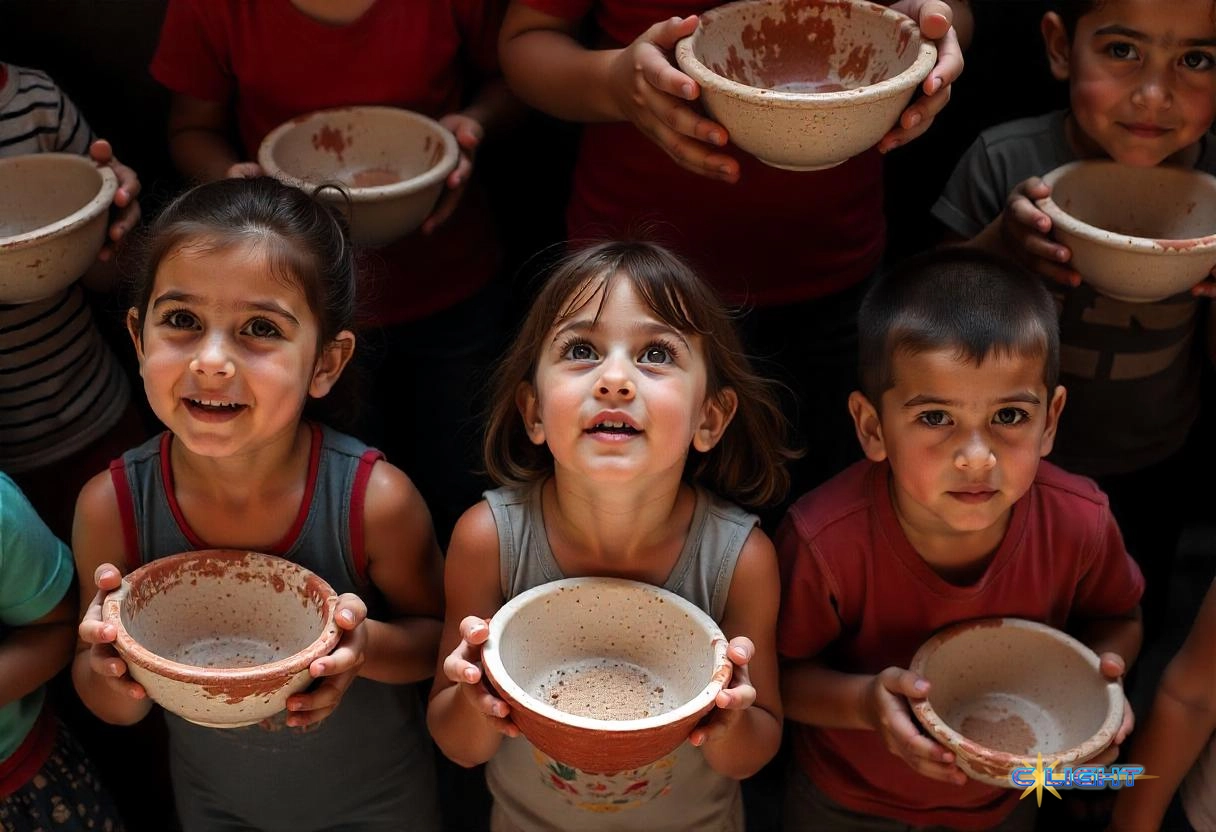In the besieged expanse of Gaza, a humanitarian catastrophe of unimaginable proportions is unfolding, marked by an accusation so grave it chills the conscience: the systematic use of starvation as a weapon of war. A damning report by Amnesty International, released on July 3, 2025, unequivocally accuses Israel and the controversial U.S.-backed Gaza Humanitarian Foundation (GHF) of implementing “starvation tactics against Palestinians” and deliberately “imposing conditions of life calculated to inflict genocide.” This isn’t merely a breakdown of aid; it’s, as Amnesty’s secretary general, Agnès Callamard, asserts, the deliberate targeting of desperate people and the foreseeable consequence of lethal distribution methods.
The “Booby Trap”: A Militarized Aid System and Its Deadly Harvest
At the heart of this crisis lies the Gaza Humanitarian Foundation (GHF), a newly established American organization, formed in February 2025, with explicit backing from both the U.S. and Israel. It was presented as an alternative to the comprehensive network led by the United Nations, and the U.S. government even pledged $30 million for its operations, despite the opacity surrounding its other funding sources and its leadership’s ties to Felonious Punk’s administration.
However, GHF’s operations bear little resemblance to standard humanitarian practices. Its distribution hubs are strategically located within Israeli military-controlled zones and guarded by armed private security contractors. This militarized approach has, according to Amnesty, transformed the very act of seeking sustenance into a “booby trap for desperate starved Palestinians.” The results are horrifyingly clear: Gaza’s Health Ministry reports more than 500 Palestinians killed and over 4,000 injured since GHF began operations in late May while trying to access food at or near these sites. Witnesses recount scenes of “massacres,” with tanks and drones reportedly firing indiscriminately into crowds, creating “chaotic and bloody” environments.
Over 165 major international charities and non-governmental organizations, including Doctors Without Borders and Oxfam, have fiercely condemned the GHF. They denounce it as “a slaughter masquerading as humanitarian aid” and a “death trap,” asserting that it violates core humanitarian principles of humanity, neutrality, impartiality, and independence. These organizations emphasize that the GHF’s four military-controlled sites are a woefully inadequate replacement for the hundreds of UN aid distribution points they supplanted, forcing millions of displaced and starving civilians into overcrowded, dangerous zones.

A Famine Deepening: The Grim Reality of a Besieged Population
The consequences of this system are playing out in a spiraling humanitarian catastrophe. The World Food Programme (WFP) reports that despite the new GHF initiative, food consumption in Gaza reached a critical low in June, with dietary diversity at its worst level since the conflict began. They attribute this to the “continued closure of crossings, intensified violence, soaring food prices, and extremely limited humanitarian and commercial supplies.” The UN Human Rights Office, in a previous report, found Israel’s methods “consistent with genocide,” including the “use of starvation as a weapon of war,” citing intentional interference with aid and policies designed to “strip Palestinians of the very necessities required to sustain life.”
The statistics paint a grim picture:
- Acute Malnutrition: Children are dying from malnutrition and dehydration. Reports indicate an average of 112 children per day were admitted for malnutrition treatment between January and May 2025.
- Overwhelming Death Toll and Displacement: Over 56,000 Palestinians have been killed since October 7, 2023, with over half being women and children. Over 90% of Gaza’s 2.3 million residents have been displaced, many repeatedly, confined to ever-shrinking, militarized zones.
- Dismantled Infrastructure: Critical infrastructure, including nearly half of health facilities, sanitation systems, and water production units, has been crippled, leading to widespread disease.
- Risk of Famine: The entire population faces “crisis” or worse levels of acute food insecurity, with critical agricultural land and wells rendered unusable.

The Clash of Narratives: Denial Versus Devastating Evidence
In response to the accusations, Israel’s foreign minister has denounced Amnesty’s report as “Hamas propaganda” and “blood libel.” The Israeli army claims it only fires “warning shots” at “suspiciously acting” individuals to control crowds and is investigating incidents. Prime Minister Benjamin Netanyahu and his defense minister have adamantly denied ordering soldiers to shoot aid seekers, blaming civilian deaths on Hamas’s alleged siphoning of aid (a claim the UN denies) and its operations within civilian populations. The GHF itself has rejected criticism, claiming to have delivered millions of meals “compassionately.”
However, these denials clash starkly with mounting evidence and firsthand accounts:
- Witness Testimonies: Palestinian witnesses consistently describe heavy barrages of fire from Israeli forces, tanks, and drones directly targeting crowds seeking aid.
- U.S. Contractors’ Revelations: Anonymous U.S. contractors working for the GHF told the Associated Press that their colleagues have used live ammunition and stun grenades against hungry crowds. They described “dangerous and irresponsible practices” by unqualified, unvetted, heavily armed security staff, and noted that American personnel monitor “suspicious” individuals, sharing information with the Israeli military.
- Israeli Media Reports: Even a left-leaning Israeli daily, Haaretz, reported that Israeli soldiers were “ordered” to shoot at unarmed Palestinians approaching aid sites, with one soldier chillingly describing their station as a “killing field.”
The systematic nature of the crisis, the overwhelming evidence of deliberate targeting or the creation of lethal conditions around aid distribution points, and the stark contrast between official denials and the on-the-ground reality paint a truly harrowing picture. This isn’t just a failure of logistics; it is, as numerous international bodies allege, a profound violation of humanitarian principles and international law. The world watches, but for the desperate and starving population of Gaza, the question remains: when will the food arrive safely, and when will the systematic starvation cease?
Discover more from Clight Morning Analysis
Subscribe to get the latest posts sent to your email.










